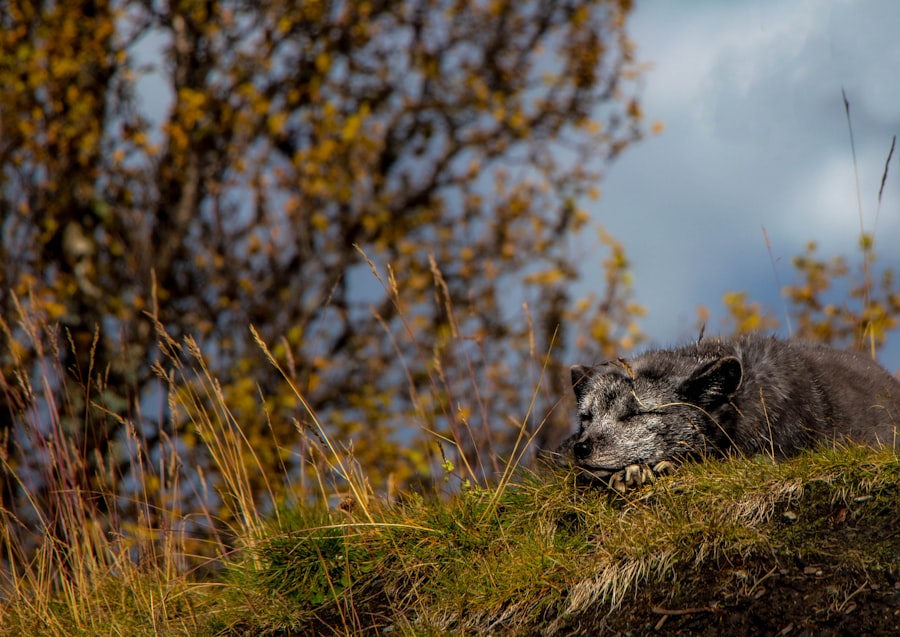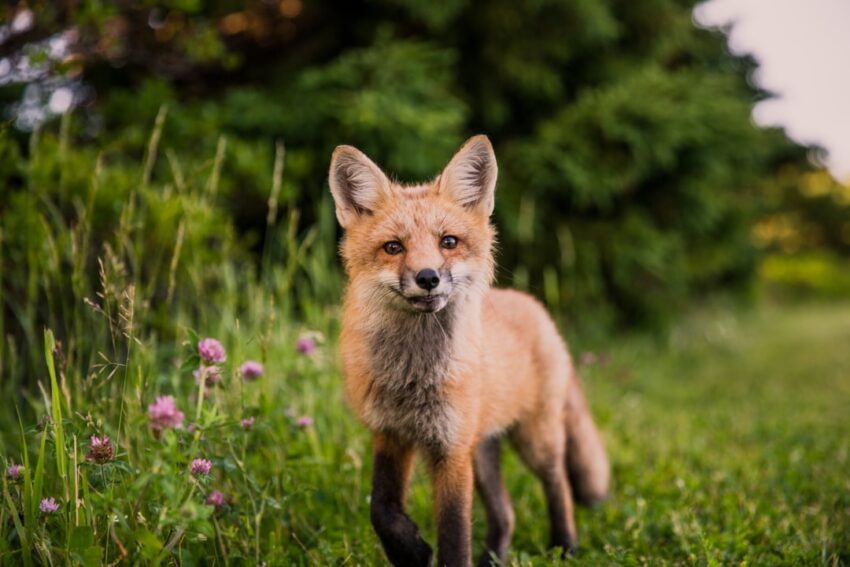Foxes are intriguing mammals that have garnered global interest due to their adaptability and intelligence. Their distinctive appearance, characterized by pointed ears, bushy tails, and varied coat colors, contributes to their appeal. Fox watching has become a popular activity for wildlife enthusiasts and nature lovers seeking to observe these animals in their natural habitats.
This pursuit offers opportunities to study fox behavior, ecology, and social structures while promoting conservation awareness. Fox-focused travel experiences are available in various regions worldwide, allowing participants to witness different fox species in diverse ecosystems. These adventures often combine wildlife observation with educational components, providing insights into fox biology, habitat requirements, and conservation challenges.
Engaging in responsible fox watching can contribute to scientific research and support local conservation initiatives, making it a valuable activity for both casual observers and dedicated wildlife enthusiasts.
Key Takeaways
- Fox Travel Adventures offers unique opportunities for wildlife enthusiasts to observe and learn about foxes in their natural habitats.
- The best destinations for fox watching include national parks, wildlife reserves, and remote forests known for their fox populations.
- Tips for fox spotting and observation include being patient, quiet, and respectful of the fox’s space, as well as using binoculars and staying at a safe distance.
- Fox-friendly accommodations and tours provide comfortable and sustainable options for travelers interested in experiencing fox habitats responsibly.
- Fox conservation and protection efforts are crucial for preserving fox populations and their ecosystems, and travelers can support these efforts through responsible tourism and donations.
The Best Destinations for Fox Watching
North American Hotspots
Some of the best destinations for fox watching include Yellowstone National Park in the United States, where visitors can spot red foxes roaming the park’s diverse landscapes.
European Encounters
In the United Kingdom, the Scottish Highlands are home to the elusive and endangered Scottish wildcat, which is closely related to the European wildcat.
Global Fox Watching Opportunities
Other popular destinations for fox watching include Japan, where visitors can observe the native red fox species, and Canada, where the Arctic fox can be found in the northern regions. No matter where you choose to go fox watching, each destination offers a unique opportunity to observe these fascinating creatures in their natural environment.
Tips for Fox Spotting and Observation

Spotting a fox in the wild can be a thrilling experience, but it requires patience, perseverance, and a keen eye. Foxes are known for their elusive nature and are often most active during dawn and dusk, making these the best times for observation. When searching for foxes, it’s important to remain quiet and still, as any sudden movements or loud noises can scare them away.
Additionally, it’s essential to respect their space and observe from a safe distance to avoid causing them stress or disturbance. Using binoculars or a camera with a zoom lens can also help you get a closer look without intruding on their natural behavior. By following these tips and being mindful of the fox’s habitat and behavior, you can increase your chances of spotting and observing these beautiful creatures in the wild.
Fox-Friendly Accommodations and Tours
| Accommodation/Tour | Location | Availability | Price Range |
|---|---|---|---|
| Wilderness Lodge | Yellowstone National Park | Year-round | 150 – 300 per night |
| Mountain Retreat | Rocky Mountains | Summer only | 200 – 400 per night |
| Forest Cabin | Great Smoky Mountains | Year-round | 100 – 250 per night |
| Guided Nature Tour | Various locations | Seasonal | 50 – 150 per person |
For travelers looking to immerse themselves in the world of foxes, there are accommodations and tours that cater specifically to fox enthusiasts. Some wildlife lodges and eco-friendly resorts offer guided tours and excursions focused on fox watching, providing guests with the opportunity to learn about fox behavior and conservation efforts from knowledgeable guides. These accommodations often prioritize sustainable practices and responsible wildlife viewing, ensuring that guests can observe foxes in their natural habitat without causing harm or disruption.
Additionally, some tour operators offer specialized fox watching tours that take visitors to prime fox habitats, providing an immersive and educational experience for wildlife enthusiasts. By choosing fox-friendly accommodations and tours, travelers can support responsible wildlife tourism while enjoying an unforgettable fox watching adventure.
Fox Conservation and Protection Efforts
As human development continues to encroach on natural habitats, fox populations are facing increasing threats from habitat loss, hunting, and human-wildlife conflict. To address these challenges, conservation organizations and wildlife advocates are working tirelessly to protect and preserve fox populations around the world. Through habitat restoration, anti-poaching efforts, and public education initiatives, these organizations are striving to ensure the long-term survival of fox species.
Travelers interested in fox watching can support these conservation efforts by choosing responsible tour operators and accommodations that prioritize wildlife protection and sustainability. By contributing to conservation initiatives and spreading awareness about the importance of fox preservation, travelers can play a vital role in safeguarding these iconic animals for future generations.
Fox-themed Activities and Experiences

In addition to fox watching, there are a variety of fox-themed activities and experiences that travelers can enjoy during their adventures. Some destinations offer opportunities for wildlife tracking and photography workshops focused on capturing stunning images of foxes in their natural habitat. Others provide educational programs and interactive experiences that allow visitors to learn about fox behavior, ecology, and conservation efforts from expert guides and researchers.
For those seeking a more immersive experience, some wildlife sanctuaries and rehabilitation centers offer volunteer opportunities where participants can assist with caring for rescued foxes and contributing to their rehabilitation. These activities provide travelers with a deeper understanding of foxes and their role in the ecosystem while offering meaningful ways to engage with these remarkable animals.
Fox-inspired Souvenirs and Gifts
For travelers looking to bring home a piece of their fox travel adventure, there are a variety of fox-inspired souvenirs and gifts available at many destinations. From handcrafted jewelry and artwork featuring fox motifs to locally made textiles and ceramics adorned with fox designs, there are plenty of unique mementos to choose from. Additionally, some wildlife conservation organizations offer merchandise such as t-shirts, tote bags, and plush toys featuring fox imagery, with proceeds supporting their conservation efforts.
By purchasing these items, travelers can contribute to fox conservation while bringing home a meaningful reminder of their wildlife adventure. Whether it’s a piece of artwork or a practical item adorned with fox imagery, these souvenirs serve as lasting reminders of the beauty and significance of foxes in the natural world. In conclusion, fox travel adventures offer a unique opportunity to connect with nature, observe wildlife in its natural habitat, and contribute to conservation efforts.
By choosing responsible tour operators and accommodations, respecting wildlife habitats, and supporting conservation initiatives, travelers can enjoy meaningful and sustainable fox watching experiences while making a positive impact on fox populations around the world. Whether it’s spotting a red fox in Yellowstone National Park or learning about Arctic fox conservation efforts in Canada, fox travel adventures provide an unforgettable opportunity to appreciate the beauty and importance of these remarkable animals in the wild.
If you’re interested in learning more about travel and tourism, you should check out this article on how to plan a budget-friendly vacation. It offers great tips and advice for saving money while still having an amazing travel experience.
FAQs
What is fox travel?
Fox travel refers to the movement and behavior of foxes as they travel from one location to another in search of food, shelter, or mates.
Where do foxes travel?
Foxes are known to travel within their home range, which can vary in size depending on factors such as food availability and population density. They may also travel long distances during dispersal or migration.
How do foxes travel?
Foxes are agile and swift animals, capable of traveling by running, jumping, and climbing. They are also known to swim when necessary.
What are the reasons for fox travel?
Foxes travel for various reasons, including hunting for food, establishing territories, finding mates, and seeking shelter. They may also travel to avoid predators or human disturbances.
Do foxes travel in groups?
Foxes are typically solitary animals, but they may travel in small groups during certain times, such as when raising young or during mating season.
Are there any risks associated with fox travel?
Foxes face risks during their travels, including encounters with predators, road traffic, and human activities. They may also be exposed to diseases and other environmental hazards.
